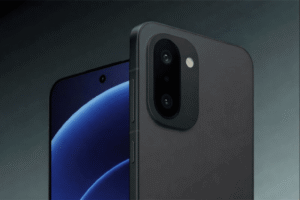Call me a tantrums – call me practical. Whenever a new pixel is launched, there is always a lot of discussion: cameras, software features, pixel -like attraction. But after seeing reviews, practical footage, specification sheet and real -world experiences (and after thinking how I use the phone daily, I am not sure that this new model is worth upgrading. A detailed and honest analysis of why I am waiting for I am given here – including design, performance, battery, camera deficiencies, software promises, price, competition and mathematics of upgrades.
Design and build: nice, but not revolutionary
The new pixel resembles exactly like a pixel. This is also a compliment and complaint.
The design is clean, plain and often extremely compact-if you like a phone that does not attract attention, then it is perfect. But “safe” also means additional features.
If you already have a new pixel (or a high-quality mid-range phone), changes in material, color or ergonomics may not find you more meaningful.
Small changes-Thin thin bezel, new camera bar, new finish are good, but not the kind of reconsideration that I say “I need it.” For a buyer who gives importance to the dramatic redesign (flat edge, new hinge, unique material), it looks like a new form rather than a new invention.
Screen and multimedia: very good, not game-changing
Pixels usually offer very good displays: accurate color, solid shine and reliable touch response.
But still, the latest generation is on the way to refine instead of bringing revolutionary changes. Until the new model brings no major changes – too much refresh rate, actually more bright HDR panel, or first technology in the industry – is the difference compared to last year’s flagship.
If you see HDR content every hour daily or are very sensitive to the specifics of the display, then see the comparison simultaneously. Most people who play streaming, scrolling and occasionally play games will probably not justify the cost of upgrade.
Related Articles: ASUS Vivobook S16 OLED (2025) Review: Snapdragon X power, OLED visuals, and marathon battery
Performance: plenty fast — for now
New pixels usually bring an updated processor and some efficiency improvement. This means fast UI, spontaneous multitasking and better on-device AI handling.
But the real speed is not everything. If your current device seems already feeling fast for your daily apps (chat, social media, navigation, email, light photo editing), then you will not see as much improvement in the use of the benchmark chart as everyday.
The importance of new hardware is its long life: Better thermal and a modern chip means that your phone can remain fast for many years. If you are planning to keep a phone for more than 3-4 years, then it is in favor of the new model. But if you change the phone every 12-18 months, then practical advantage is very low.
Camera: computational wins vs. practical trade-offs
Google is still leading in software-operated photography: fantastic HDR, best night shots, and AI features that make difficult photos easier.
But the camera is the area where I am the most alert. New models often offer slightly better sensors or new shooting modes, but the most dramatic improvements are in software-side and can sometimes be given in older devices through updates.
Also: More features can mean more processing time, large file size and less spent on battery. If you are a simple photographer, the camera upgrade may look good, but not necessary.
If you are a creator who is dependent on the phone as your main camera, then you will need a direct comparison – not only marketing stills, but also see the real world sample and small video tests.
Related Articles: NatWest Launches Initiative to Back Indian Entrepreneurs
Camera: computational wins vs. practical trade-offs
One of the biggest features of Pixel is a clean Android and reliable update. Google’s feature drop condenses and many years of operating system/safety guarantee are meaningful.
But the promises matters only when the company is maintained on them – and if the updates are really useful.
Are the main AI features available only on the new silicone? If yes, how many of them will also come to the old pixel? This is important for my decision: If the old phone can mostly run the magic of software, then there is no meaning to upgrade.
Price and value: the math that matters
Simply put, new pixels do not get cheap. If the upgrade is a few hundred dollars and your existing phone works well, then you have to ask what problem this purchase solves. Is this a worry of low battery life? Better low light photos for your work? Fast performance for editing on the device? If you see a clear, daily problem that the new pixel will solve, then it may be appropriate to spend.
Otherwise, the price proposal weakens – especially when strong options are present at a low price.
Competition: better or cheaper elsewhere?
Samsung, OnePlus and other companies are offering feature-rich phones at attractive prices. Sometimes they replace some software polish for better hardware-big battery, fast charging, high-resolution display.
Meanwhile, Apple remains a strong option for iOS users. Before upgrade, compare Pixel not only with previous year’s Pixel, but also with contemporary Pixels: Do they provide more batteries, better deals, or more suitable features for your daily use?
Repairability, longevity and sustainability
Is the phone repair easy? Has it used recycled materials? How long will it get updates? If you care about durable consumption (and I do), then these things matters.
Sometimes waiting for the small generation gives manufacturers a chance to overcome initial production problems or reduce costs. This is another reason that we should wait.
Repairability, longevity and sustainability
Is the phone repair easy? Has it used recycled materials? How long will it get updates? If you care about durable consumption (and I do), then these things matters.
Sometimes waiting for the small generation gives manufacturers a chance to overcome initial production problems or reduce costs. This is another reason that we should wait.
Related Articles: Snapdragon 8 Elite vs Tensor G5: The Ultimate Showdown of Next-Gen Smartphone Processors
Final verdict:
who should wait — and who should buy now
I am not saying that the new pixel is a bad phone. For the first time pixel buyers, upgrade from old devices, or who are currently needed new AI features, this can be a great option for them.
But for me – and many existing pixels or recent flagship phone owners – these changes seem gradual. As long as you do not have any clear, current problem, which can solve new hardware, it is prudent to wait: you will save money, avoid the buyer’s rebellion, and perhaps you will get a better deal in a few months.
If you are still in a dilemma: Test the battery in the real world, compare camera photos of those who actually use the phone (not studio shots), and think how long you will keep the device. This mathematics – not publicity – will help you in taking decisions.
If you want, I can help you prepare an upgrade checklist according to your use (battery consumption, photography needs, gaming, office apps) and can tell you whether the new pixel will really change your daily life.






